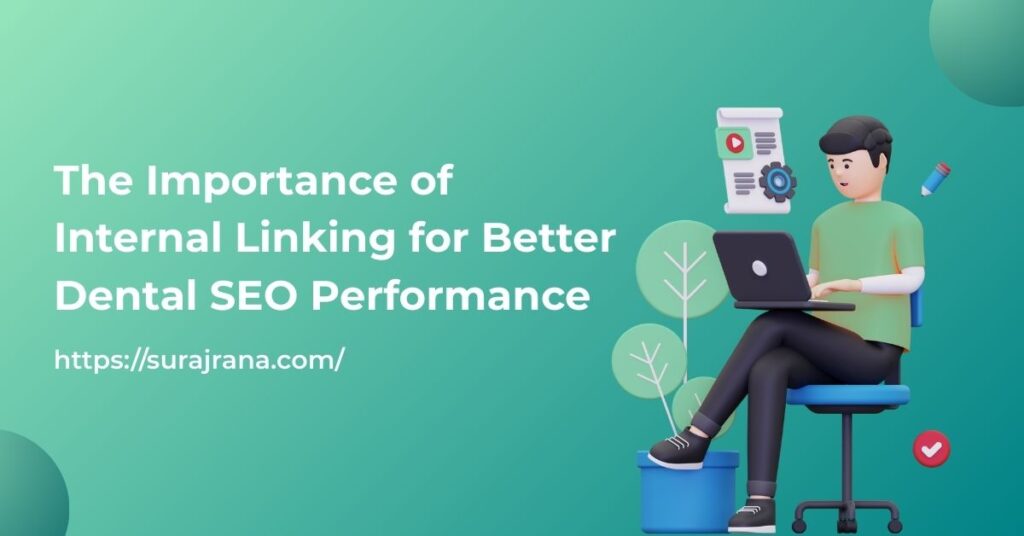In the highly competitive world of dental marketing, a strong online presence is no longer optional—it’s essential.
For dental practices aiming to grow their patient base and build long-term authority online, understanding and implementing proper SEO strategies is critical.
One often overlooked but powerful aspect of search engine optimization is internal linking.
This article explores how internal linking plays a vital role in improving dental SEO performance and offers practical tips for implementing a successful internal linking strategy.
What Is Internal Linking?
Internal linking refers to the practice of hyperlinking one page of your website to another page within the same domain.
Unlike external links, which point to pages on other websites, internal links help users and search engines navigate and understand the structure of your site.
These links are typically embedded in text and guide visitors to related content, service pages, blog posts, or resources that provide more in-depth information.
For example, if you have a blog post about “The Benefits of Teeth Whitening,” you might include an internal link to your services page about professional teeth whitening procedures.
This not only improves user experience but also boosts your site’s SEO performance.
A well-structured internal linking strategy, often implemented by a Professional SEO for Dentists, ensures that important pages gain visibility and rank better in search engines.
Why Internal Linking Matters for Dental SEO
Internal linking is more than just a convenience for users—it’s a powerful tool that supports various aspects of search engine optimization. Here’s why it’s crucial for dental websites:
1. Enhances Crawlability and Indexing
Search engines like Google use bots to crawl and index web pages. Internal links help these bots discover new or updated content on your site. If a page on your dental website isn’t linked to from any other page, search engines might have a hard time finding and indexing it. Proper internal linking ensures that every important page is accessible to both users and search engines.
2. Distributes Page Authority
Also known as “link juice,” page authority refers to the value or credibility passed from one page to another through hyperlinks.
Internal linking allows you to distribute authority from high-performing pages (such as your homepage) to other critical service or blog pages.
This improves the overall ranking potential of your site and ensures that lesser-known but valuable pages receive attention.
3. Improves User Experience
Patients visiting your dental website are often seeking specific information—whether it’s about a dental procedure, pricing, or aftercare tips.
Internal links guide users to relevant content seamlessly, reducing bounce rates and increasing time spent on the site. A better user experience translates to higher engagement and better search rankings.
4. Builds Topic Relevance and Context
Search engines look at internal links to understand the structure and hierarchy of your content.
When you consistently link related topics together, you signal to search engines that your site offers comprehensive coverage on specific subjects.
For dental websites, this might include interlinking between service pages like “Dental Implants,” “Bone Grafting,” and “Oral Surgery,” establishing your authority in restorative dentistry.
Key Components of an Effective Internal Linking Strategy
A random scattering of internal links won’t do much good. To maximize the benefits, dental practices need a well-thought-out internal linking strategy. Below are the key components:
1. Strategic Anchor Text
Anchor text is the clickable text in a hyperlink. Search engines use it to understand what the linked page is about.
For example, instead of using vague text like “click here,” opt for descriptive anchors like “professional teeth cleaning services.” This not only helps search engines but also provides context to users.
2. Link Deep, Not Just to the Homepage
One of the most common mistakes dental websites make is linking mostly to the homepage.
While the homepage is important, the goal of internal linking is to drive traffic to deeper, more specific pages.
Link to individual service pages, blog posts, FAQs, and testimonial pages to boost their visibility and relevance.
3. Use a Logical Site Structure
Your website should have a clear hierarchy: homepage > category pages > individual service or blog pages.
A well-organized structure ensures that internal links flow naturally and support user navigation.
For instance, under a category like “Cosmetic Dentistry,” you can have subpages for “Veneers,” “Whitening,” and “Bonding,” all interlinked with each other.
4. Update and Audit Regularly
As your dental website grows, old pages might become outdated or irrelevant. Conduct regular audits to identify broken links, outdated content, or opportunities for new internal links.
Tools like Screaming Frog or Ahrefs can help automate this process and ensure your site remains optimized.
Best Practices for Internal Linking on Dental Websites
Implementing internal links effectively requires attention to detail and a user-focused approach. Here are some best practices to follow:
Prioritize High-Value Pages
Identify which pages drive the most conversions or have the most search potential. These could include your service pages, appointment booking form, or testimonials.
Make sure these pages are well-linked from various parts of your website to drive traffic and improve rankings.
This is especially important in a strong Dental SEO strategy where every click can lead to a potential patient.
Keep It Natural
Internal links should fit seamlessly into your content. Avoid keyword stuffing or over-optimization.
A natural tone improves readability and avoids penalties from search engines. Good internal linking contributes to a healthier site structure and supports long-term Dental SEO Solutions goals.

Limit the Number of Links Per Page
While there’s no exact number, too many internal links on a single page can confuse users and dilute SEO value.
Focus on quality rather than quantity. A good rule of thumb is to include 3–5 internal links per blog post, depending on its length.
Use a Consistent Format
Maintain a consistent approach to linking across your website. Use uniform anchor text for recurring pages and ensure that each link is styled clearly (underlined or in a different color) so users can easily identify clickable content.
How Internal Linking Supports Content Strategy
A dental website is more than just a digital brochure—it should be a resource hub that educates and informs visitors. Internal linking can play a strategic role in content planning by:
- Creating topic clusters: Group related content together, such as blog posts on children’s dental care, and link them to a central pillar page.
- Promoting older content: When you publish a new blog post, link back to older articles that are still relevant. This keeps all your content alive and visible.
- Driving lead generation: Guide visitors from informative content to conversion-focused pages like “Book an Appointment” or “Contact Us.”
Measuring the Success of Internal Linking
To evaluate the impact of your internal linking strategy, track these key metrics:
- Organic traffic: Use Google Analytics to see if traffic to your internal pages has increased.
- Bounce rate: A lower bounce rate indicates users are exploring more pages, which is a good sign.
- Average session duration: Longer sessions suggest that users find your content valuable and engaging.
- Page authority: Tools like Moz can help you track whether your internal pages are gaining authority over time.
Common Internal Linking Mistakes to Avoid
Even well-intentioned strategies can fall short if not executed correctly. Here are common mistakes to watch out for:
- Overusing exact-match anchor text:
Relying too heavily on the same keyword-rich anchor text can appear manipulative to search engines.
It may come across as spammy and could actually harm your rankings instead of helping them. Aim for natural, varied anchor phrases that align with the content’s context.
- Linking to irrelevant pages:
Every internal link should serve a purpose. Linking to unrelated pages confuses both users and search engines, diminishing the quality of the user experience.
Always ensure that each link adds genuine value and guides users to helpful, related content in their journey across your site.
- Ignoring orphan pages:
Orphan pages—those with no internal links pointing to them—are often overlooked, but they pose a major problem for Dental SEO.
These pages are difficult for both users and search engines to discover, meaning their content may go unnoticed. Be sure to regularly audit your site to connect and integrate these pages effectively.
- Not optimizing for mobile users:
A large number of visitors will access your dental website from mobile devices. If your internal links are too small or hard to tap, you risk frustrating users and increasing bounce rates.
Make sure your mobile experience is seamless by using touch-friendly link spacing and responsive layouts that support smooth navigation.
Conclusion
Internal linking is a powerful yet often underestimated tool in the world of dental SEO. By guiding users through a well-structured website.
Distributing authority to critical pages, and helping search engines understand the context of your content, you can significantly boost your site’s visibility and performance.
When implemented strategically, internal linking enhances every part of your SEO plan—from content marketing to technical optimization—making it a must-have in your digital toolkit.
At Suraj Rana SEO, we believe internal linking is more than just a technical tweak. For dental practices looking to stand out online, investing time and effort into a solid internal linking strategy can yield long-term benefits.
It’s not just about driving traffic; it’s about creating a seamless, informative experience that builds trust and turns visitors into loyal patients.

My name is Suraj Rana, and I am a seasoned Dental SEO Specialist with extensive experience in the Dental SEO industry. Leveraging my deep knowledge and expertise, I help dental practices enhance their online visibility and attract more patients.


